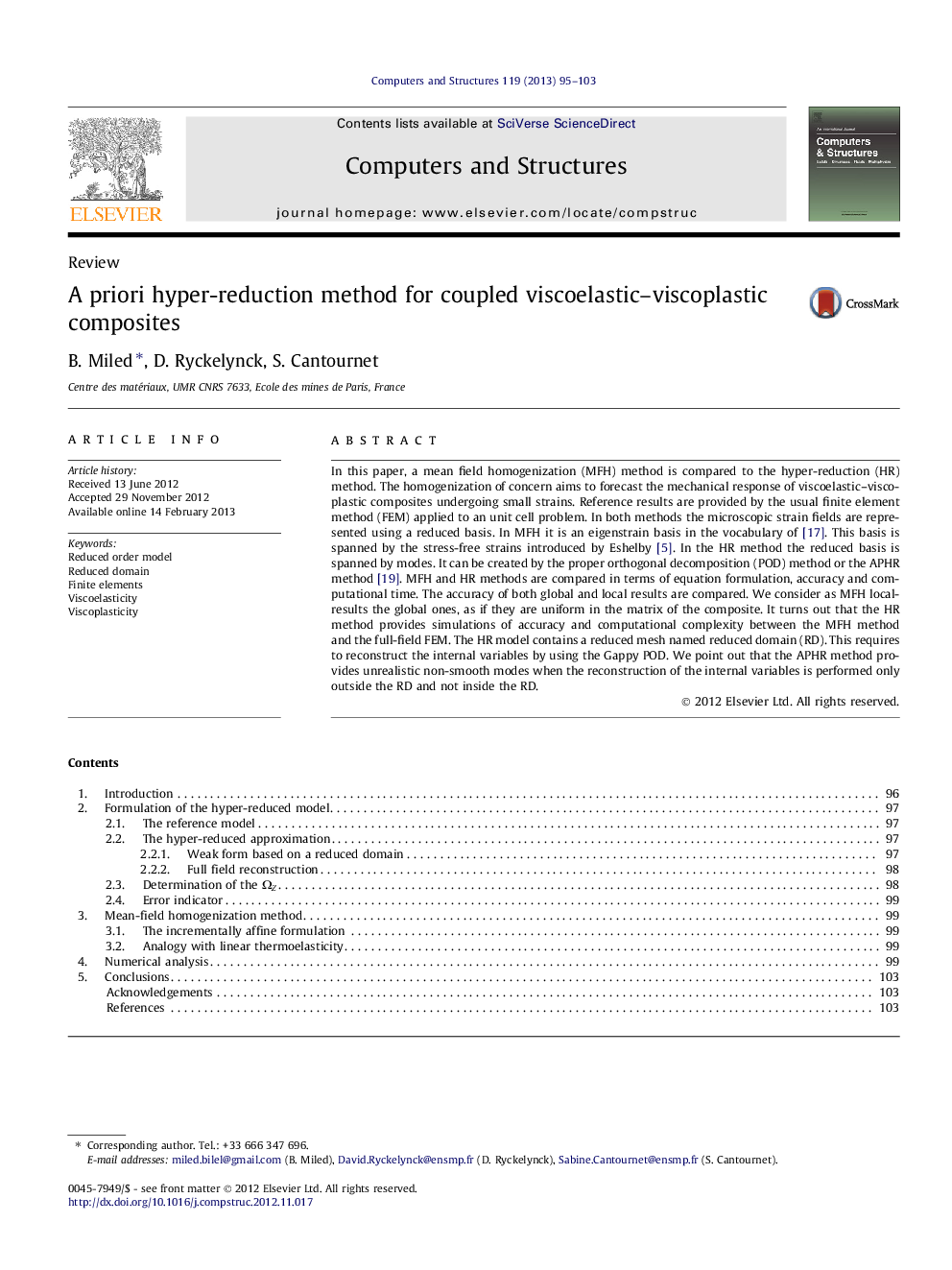| کد مقاله | کد نشریه | سال انتشار | مقاله انگلیسی | نسخه تمام متن |
|---|---|---|---|---|
| 510627 | 865778 | 2013 | 9 صفحه PDF | دانلود رایگان |

In this paper, a mean field homogenization (MFH) method is compared to the hyper-reduction (HR) method. The homogenization of concern aims to forecast the mechanical response of viscoelastic–viscoplastic composites undergoing small strains. Reference results are provided by the usual finite element method (FEM) applied to an unit cell problem. In both methods the microscopic strain fields are represented using a reduced basis. In MFH it is an eigenstrain basis in the vocabulary of [17]. This basis is spanned by the stress-free strains introduced by Eshelby [5]. In the HR method the reduced basis is spanned by modes. It can be created by the proper orthogonal decomposition (POD) method or the APHR method [19]. MFH and HR methods are compared in terms of equation formulation, accuracy and computational time. The accuracy of both global and local results are compared. We consider as MFH local-results the global ones, as if they are uniform in the matrix of the composite. It turns out that the HR method provides simulations of accuracy and computational complexity between the MFH method and the full-field FEM. The HR model contains a reduced mesh named reduced domain (RD). This requires to reconstruct the internal variables by using the Gappy POD. We point out that the APHR method provides unrealistic non-smooth modes when the reconstruction of the internal variables is performed only outside the RD and not inside the RD.
Journal: Computers & Structures - Volume 119, 1 April 2013, Pages 95–103